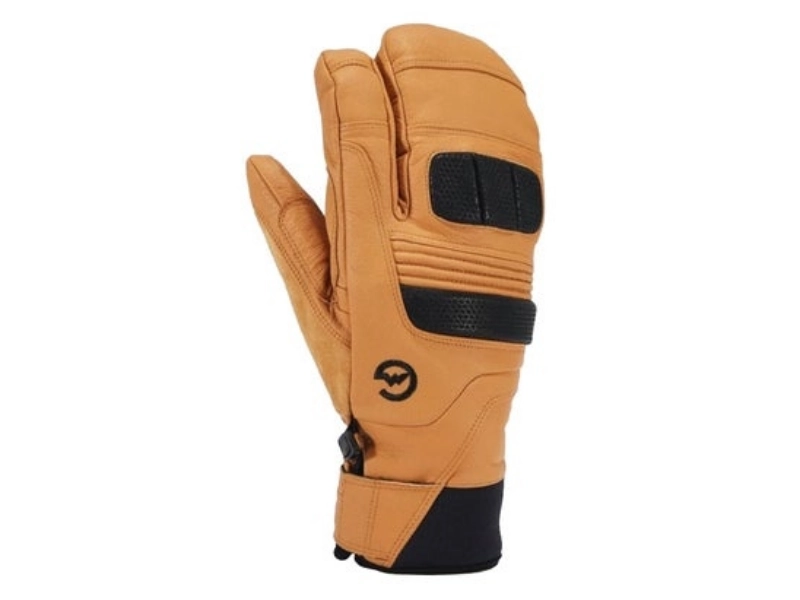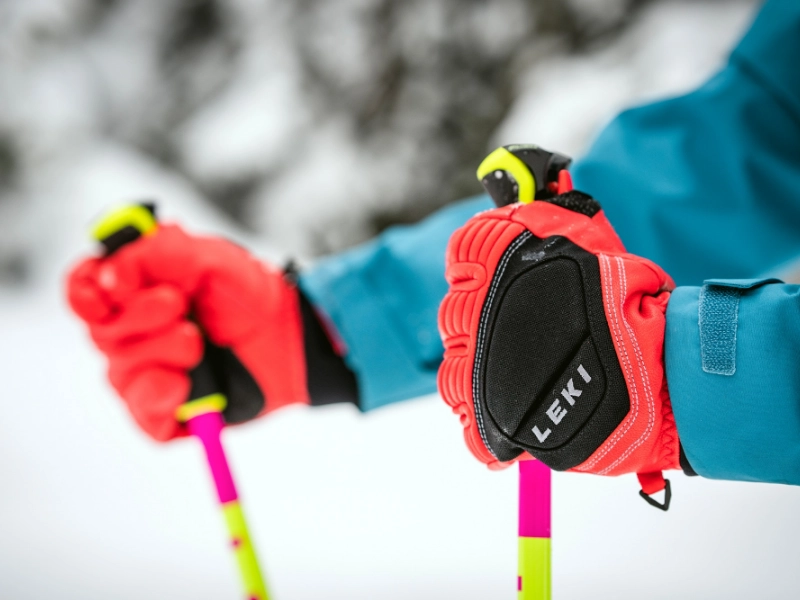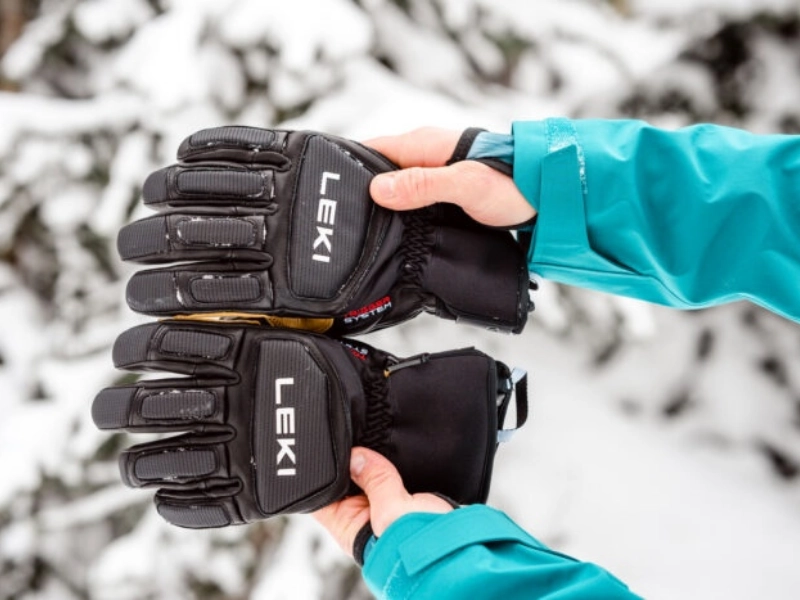Selecting Ski Gloves: Juggling Dexterity and Warmth
To shield your hands from wet snow and rain, the best ski gloves feature a waterproof, breathable membrane like Gore-TEX or eVent. While synthetic fabrics like nylon or polyester are lightweight and water-resistant, leather palms provide durability and grip. Natural goose down feathers or branded synthetic fibers like PrimaLoft or Thinsulate can be used as insulation. Elevated insulation retains heat by trapping air, but when damp, it loses its effectiveness.
Warmth

Sealing with water
 For ski gloves, a waterproof membrane is an essential component. Though the technology used in different brands and designs of gloves varies, most gloves have a membrane sandwiched between the insulation and the shell. Your hands will remain dry and warm even in damp weather thanks to this barrier, which prevents sweat and moisture from penetrating the gloves.
Glove manufacturers stuff their interiors with insulating materials such as down, synthetics, and, for heated gloves, an electric heating grid. Some gloves have detachable liner gloves that can be worn in addition to the outer shell gloves. The lining of the glove may be composed of fleece or another material.
Performance on the slopes depends on your ability to grip, but even the best-designed gloves can become uncomfortable if the palm material is stiff and makes it difficult to grasp. The palm material's quality and how it is treated both during and after production are essential for a good grip and dexterity.
For ski gloves, a waterproof membrane is an essential component. Though the technology used in different brands and designs of gloves varies, most gloves have a membrane sandwiched between the insulation and the shell. Your hands will remain dry and warm even in damp weather thanks to this barrier, which prevents sweat and moisture from penetrating the gloves.
Glove manufacturers stuff their interiors with insulating materials such as down, synthetics, and, for heated gloves, an electric heating grid. Some gloves have detachable liner gloves that can be worn in addition to the outer shell gloves. The lining of the glove may be composed of fleece or another material.
Performance on the slopes depends on your ability to grip, but even the best-designed gloves can become uncomfortable if the palm material is stiff and makes it difficult to grasp. The palm material's quality and how it is treated both during and after production are essential for a good grip and dexterity.
Breathability
 Consider gloves with a waterproof and breathable membrane, like Gore-Tex (or eVent), for people who prefer to ski in colder locations. This type of membrane lets sweat escape while keeping snow out. Additional features to consider include touchscreen compatibility so you can use your phone while wearing gloves, adjustable cuffs to make a tight fit around your wrist, and wrist leashes to keep them from falling off the elevator or slipping in your pocket.
Take into account the insulation of the glove or mitten as well, including whether it is synthetic or down and whether it has distinct finger sections for insulation. Gloves provide warmth by drawing your fingers closer together, but they compromise dexterity. If dexterity is important, wear mittens instead of gloves. Additional things to think about include the palm and outer shell materials (leather or synthetic), Velcro-closure adjustable cuffs, and elastic cuffs that fit snugly without catching on other equipment. Finally, consider how easy it will be to clean the shell liner. Over time, harsh washing cycles and abrasive chemicals can damage insulating materials and waterproof membranes.
Consider gloves with a waterproof and breathable membrane, like Gore-Tex (or eVent), for people who prefer to ski in colder locations. This type of membrane lets sweat escape while keeping snow out. Additional features to consider include touchscreen compatibility so you can use your phone while wearing gloves, adjustable cuffs to make a tight fit around your wrist, and wrist leashes to keep them from falling off the elevator or slipping in your pocket.
Take into account the insulation of the glove or mitten as well, including whether it is synthetic or down and whether it has distinct finger sections for insulation. Gloves provide warmth by drawing your fingers closer together, but they compromise dexterity. If dexterity is important, wear mittens instead of gloves. Additional things to think about include the palm and outer shell materials (leather or synthetic), Velcro-closure adjustable cuffs, and elastic cuffs that fit snugly without catching on other equipment. Finally, consider how easy it will be to clean the shell liner. Over time, harsh washing cycles and abrasive chemicals can damage insulating materials and waterproof membranes.
Adroitness
 Compared to mittens, gloves offer greater dexterity, which makes them perfect for tasks requiring deft hand movements like adjusting equipment and zipping. Conversely, because your fingers are insulated from one another, mittens keep them together and provide warmth. But if you need to quickly adjust your goggle strap or answer your phone, they can impede your movement and force you to take off your gloves.
It's imperative that your gloves have trustworthy waterproofing if you plan to use them in wet or snowy weather. Even when your hands are damp from sweat or moisture in the atmosphere, waterproof materials like Gore-Tex will help keep them dry.
Another crucial thing to think about is insulation, particularly if you want to ski in a cold climate. To stay warm and retain heat, think about selecting a higher-loft insulation like Thinsulate or goose down. Alternatively, to keep your hands warm without compromising dexterity, choose lower-loft insulation like PrimaLoft or Breathefil.
Compared to mittens, gloves offer greater dexterity, which makes them perfect for tasks requiring deft hand movements like adjusting equipment and zipping. Conversely, because your fingers are insulated from one another, mittens keep them together and provide warmth. But if you need to quickly adjust your goggle strap or answer your phone, they can impede your movement and force you to take off your gloves.
It's imperative that your gloves have trustworthy waterproofing if you plan to use them in wet or snowy weather. Even when your hands are damp from sweat or moisture in the atmosphere, waterproof materials like Gore-Tex will help keep them dry.
Another crucial thing to think about is insulation, particularly if you want to ski in a cold climate. To stay warm and retain heat, think about selecting a higher-loft insulation like Thinsulate or goose down. Alternatively, to keep your hands warm without compromising dexterity, choose lower-loft insulation like PrimaLoft or Breathefil.








